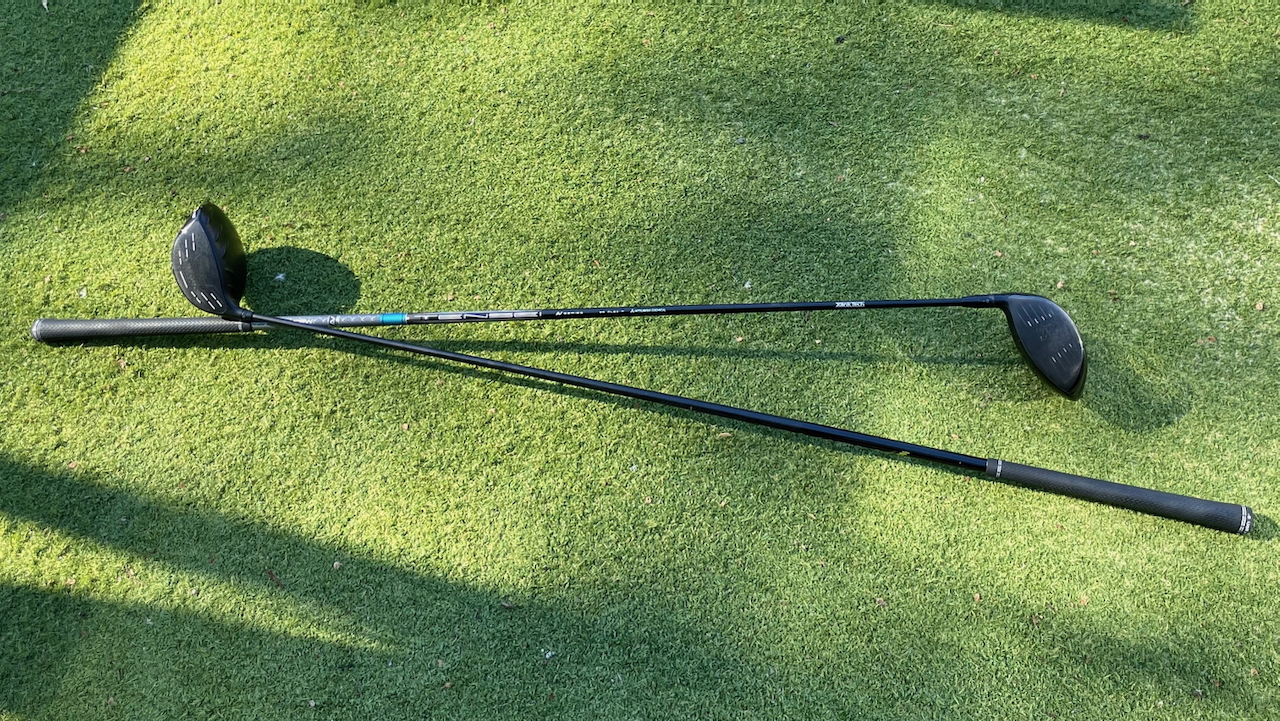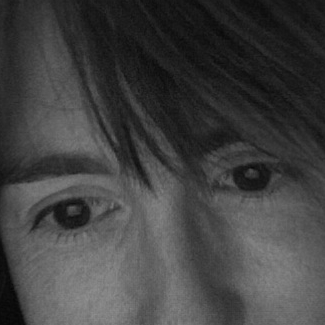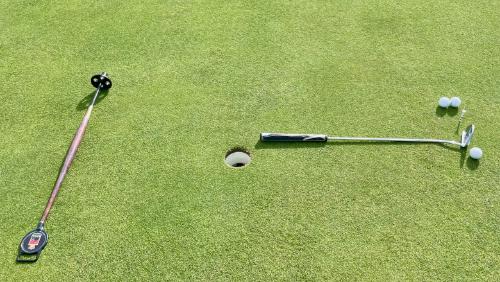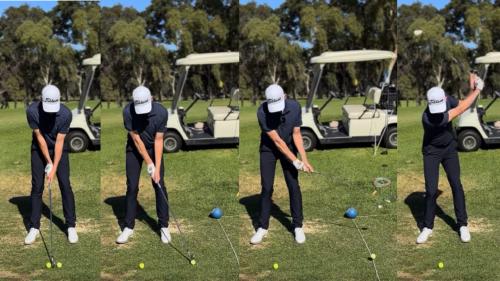The driver is a club I can hit really well - one of my first novelty prizes was for longest drive at my grade - but it is also the one that tests my skill and nerve the most…
…Unfortunately, in recent weeks all the other changes I’ve made didn’t gel for this club as I started to lose balls not just left (pull/hook) but also right (push/slice). The dreaded slice; bane of golfers everywhere. Not feeling like I know where the ball is about to go has meant I’ve been getting more and more nervous (and tense) on the tee, which (of course) just makes it worse.
What was happening?
In search of some confidence, I’ve been practicing more with the driver in a space I’m comfortable with no fear of hitting anyone. As I explained before, I reset my driver to its original loft, because this made sense given the way I’ve changed my grip recently with my coach.
For the first practice session I was hitting my drives pretty well. The rest of my clubs, wedges through irons, hybrids and up to fairway wood, were also working.
What do I mean by “well” and “working”?
If I’m sticking to the PAD analysis (which I find helpful) then it means first that my process (P) is getting easier to follow, more fluid and natural. Unless I get lazy, I’m scoring myself 9 or 10 on that for each shot.
In terms of accuracy (A), I’m more reliably hitting the ball on my start line, with its movement to the target being straight or with a bit of draw/fade. I don’t have complete control over where the ball goes, but it feels to be within an “acceptable” range. Writing this, I realise I need to quantify this better for clarity. Often I’d score myself a 7 or above, but what does that mean in degrees from target? I’m not actually sure.
In relation to distance (D)? Across the clubs I’m hitting for any given practice session I get fair or good contact (some fat/thin, but much fewer of these), resulting in pretty reliable distances. Again, this could be better quantified, but I’m pretty sure my scores are 7 or above most of the time.
For the driver specifically? On the range my process felt ok (probably not great, but it wasn’t a worry), I was less accurate or sure of distance, but nothing awful (ie really wayward). The trouble was that once I took the driver out on course I was hitting it all over the place! At that point it was over a week to my next lesson, so I set aside time to at least try a few things before that. It seemed likely that my process wasn’t good enough for the driver - meaning that it wasn’t helping me be ready as I moved from the range out to each of the different tee boxes on course.
The look of the fairway (wide/narrow/slope/straight/dogleg), position of the tee box (central/left/right) and the various trees and bunkers you want to avoid, etc, all alters how you feel as you stand up to take your drive. Without a solid process you can get derailed, lose focus and the ability to visualise what you’d like to do in that moment.
In addition, as you lose confidence with how you hit the ball with a particular club, the process of visualisation seems irrelevant. “What’s the point?”, you think. “This could go anywhere.”
One thing’s for sure… you’re not feeling ready to hit the ball, even though that’s exactly what you have to do!
What I tried with the driver
Given my biggest fear were the high misses right or left, when I got too much under the ball, I reduced my anxiety by using a lower tee. This helped. I felt like I was staying in the shot a bit more, with better contact more regularly. My misses could still go anywhere, but (in general, although it was still possible) not too high.
The grip and setup process were not feeling comfortable at all with driver (in spite of being fine with all the other clubs). I compromised and moved to a more neutral grip (right hand less over the handle, left hand a bit stronger again). For the time being this felt better. I also stopped thinking so much about aligning the handle with the line from my right hip to right collarbone. My focus went back to comfort and balance. What looked and felt ok? Just do that. D came out with me on course and tried to help by noticing and explaining what looked different in what I was doing between good and bad drives.
Did this help? Maybe a little, but not enough. It got me through 27 holes of stroke. I won the final 9, which could have been weights and fitness training more than anything, since my driving of the ball was still unreliable. I knew I needed outside help!
Lesson thoughts and actions
This is difficult to explain, and, as I try to write it down, I can see how my coach’s teaching style doesn’t work for everyone.
Influencers on the web would like you to think there are rules to setting up for different shots… but I don’t believe them and neither does my coach. In spite of saying that, I built myself a process checklist, as you know:
- Stand up tall, balanced, club in right hand (* you’ve got this)
- Place club head behind ball with correct face alignment, right hand on top, index finger down shaft, handle and arm on line with inner right hip and right collarbone (* you have control of the club face)
- Take comfortable stance with feet keeping club face and handle alignment the same (* relax in balanced tension)
- Slide left hand into neutral grip under right hand, settling the grip by “wringing the towel”, but take care to keep the club in the fingers, left hand neutral and right hand over the top (* relaxed hands, feel club between fingers and thumb of right hand)
- Pop the hips to the left slightly, keeping club face and handle alignment steady (* feel the weight in your feet)
- Take the shot
It has been helpful; however, I’ve found I need to be flexible, in particular when I’m on course. Sometimes it’s the lie, sometimes it’s because I really need to draw the ball left (around a corner) or hit the ball low (under trees) or high (over a bunker to land soft). I have played enough golf to have a feel for how to do these things and I need to respect that, without throwing all aspects of the process away.
Of course, if there were going to be rules they’d be for driver, wouldn’t they? You’re on a tee - a prepared piece of flat turf from which to hit the ball. But it’s not that easy. There are still all those other things that alter how you feel, see and imagine what you need to do (ie the look of the fairway, position of the tee box, trees and bunkers you want to avoid, etc). In addition to this? Well, how about you, your body and how your brain perceives the world? We’re all individuals… (let’s just set aside the famous Monty Python scene here).
So. No rules or set formula. My lesson wasn’t about telling me what I was doing wrong technically and how to fix it. It didn’t involve going back to a set of rules for setting up with the ball just inside my left heel, getting my body into a “K” position, creating the perfect shoulder tilt, taking an open or closed stance, controlling the backswing, not going “over the top”, etc, as numerous web pages and videos will tell you (amongst many, many other things). It was about helping me to visualise what I wanted to do, get myself ready (as an individual, who thinks about, sees and does things in a certain way) and then drive the ball. Some people are looking for more direct advice than this, I think, so might not have enjoyed this lesson. I did.
First, we made sure that I had a better sense of how the driver works as a tool. It is just another club, but its construction means that you need to develop a different way of looking at it to see its face as separate from its centre of mass (back from the face and more in the centre of the club). It was helpful to move the club around to feel how its weight was balanced, to get a sense of how to deliver this club’s face to the ball.
I have never felt that comfortable with the driver - and my discomfort has increased in recent weeks - but after taking time to get a better sense of its balance in my hands it eventually felt more friend than foe.
Setting myself up to take the shot was about visualising what I wanted to do and actively moving alongside the ball into a comfortable position looking up at my target to keep it always in mind.
Importantly - and this was probably the only “rule” - I needed to align the club face and take a stance that angled the club shaft back from the ball towards me, keeping my hands behind the clubhead. This returned me to aligning the club handle with that right hip, right collarbone line I’m using for all my other clubs.
I was not thinking about grip at this point. In the lesson itself I was concerned only with holding the club with two hands (however felt best), moving into position to take the shot (as above), then taking the shot. My aim was to send the ball out on the start line laid out by two alignment sticks (the first on the ground and the second angled up towards my target). Could I hit the angled stick with the ball as it headed to the target? Yes I could (at least some of the time)! Did the ball continue on a straight trajectory? Not always, no, but it all felt much better than it had.
In terms of ball flight, it helped to keep the club balanced in the swing, always in front of me, not falling behind. If it got out of balance I sliced the shot right (and I think this was because I fought to regain balance in the swing and bring the club back to the ball).
We also discussed how easy the swing could be, with force applied at the start and then again to slow the club after impact, allowing the club to do the rest of the work. I didn’t play around with this idea much in the lesson, or in my practice immediately after, but I did when I was on course the next day (see below).
Before finishing we got rid of the alignment sticks so I could get a feel for setting up to the target without them. I felt like I had a better idea of what I was doing, which was great. However, my brain did feel a bit fried! I definitely wanted to take some time to continue hitting balls to get a better understanding of how it felt immediately.
Post-lesson practice
I did a bit of putting to give my brain and body something different to do, then I headed off to the other range to hit some drives while the lesson was fresh.
My practice began focused on seeing the target, the active and purposeful setup from the lesson, then just taking the shot. I made sure I kept the angle of the club shaft back from the ball to my body (on the right hip/collarbone line) and realised that this meant the grip I had for all my other clubs with the right hand over and left hand very neutral felt more natural again.
I hit a range of shots, both good and bad, but found thinking about keeping the swing balanced with the club in front of me helped reduce the likelihood of a slice. My problem was that the dynamic setup tended to make the rhythm of my shot feel too fast to me. That’s when my left miss came back (for whatever reason, something about the feeling of “too fast” means I hoik it left).
I wanted to find a way to keep active and purposeful, but also build my rhythm through a calm, repeatable setup.
With my grip pretty much back to the one I use for everything else, it seemed possible to:
- Hold the club in my right hand while looking from behind the ball at the target and picking a start line, then moving to beside the ball to place and align the club head with that start line.
Placing and aligning the club head with my right hand then becomes standard for all shots.
-
Get comfortable in the stance and move my left hand under the right into my grip.
-
Make time for a dynamic check: waggle the club up and down to feel its balance; pull back to the body, because the handle of the club should hit just inside the right hip (and I think about my appendix position at this point… because anatomy).
-
A final look at the target and take the shot.
Note: Practice swings are separate - do that before you start this process if you think you need to get moving or sense a balanced feel. Right hand only swings can be helpful if it’s been going wrong - with right hand only, feeling the club in balance in the swing is easier.
Taking this on course
The next day it was competition time. I’ve started to warm up properly, so had a small bucket of balls to work through, all the way to driver. (It’s ok when its early and there’s noone around on the fairways left and right of the range!)
Warmup went pretty well considering… I sliced one, then corrected that into a low pull left for the next one with the “keep the club in front” feel. This was an understandable overcorrection, but it also felt like I was losing the rhythm.
I tried something new for the next shot, remembering the discussion about where you need to put effort into the swing. For the last few practice balls I thought about putting most effort into setting the club off and back, then letting the swing rhythm take over. Letting the club take care of itself definitely helps keep the balance. It doesn’t slow things down exactly, it’s just that you can’t rush the club. The club is still moving plenty fast enough when it reaches the ball and after (when you put some effort into slowing it down).
My drive on the first was great. Not all the others were, but I had a lot more confidence. While I was out on course I did all the things I’ve mentioned above and that thought, the one about starting the club and then letting it take care of itself, helped a lot.




